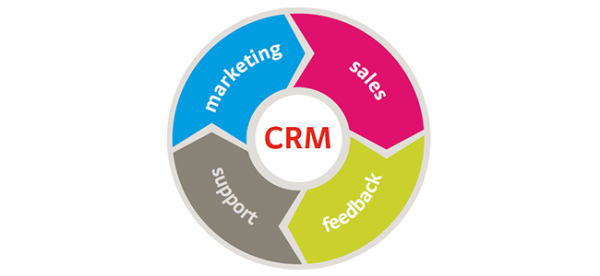
Introduction
Don’t you want to speed up decision-making, ensure quality of work, and improve teamwork of your company? Thanks to the rapid development of digital technology, all these things are attainable. Yet, before businesses can reach that point, they need to embrace change, let go of old-fashioned procedures and engage in a digital transformation. The transition includes utilising digital technologies to improve business models, processes, and activities. Therefore, this article will discuss three ways how digital transformation optimises business workflow and resources, including the implementations of Enterprise Resource Planning (ERP), Human Resource Management (HRM), and Customer Relationship Management (CRM).
Enterprise Resource Planning (ERP)

Enterprise Resource Planning is a business system that “integrates and runs all aspects of your business – everything from traceability of raw materials, management and optimization of inventory, production planning and scheduling, to financial controls and even customer relationship management” [1]. To optimize business workflow and resources, an ERP system assists companies to become more time efficient. It also enhances businesses’ productivity by eliminating replication and manual entry of data.
Using one of our clients, KONE Elevator (HK) Ltd, as an example, all work was paper-based and time-consuming before undergoing digital transformation, as staffs had to input details of each elevator manually. In order to improve their workflow, we developed a mobile application and backend system for them to store all information regarding elevator maintenance. This allows their staffs to easily record, transfer, and search for relevant elevator details. As a result, staff efficiency has increased with reduced workload, human error, and risk of data loss. The mobile application also enables real-time update of information. This instance clearly highlights that ERP allows automatic workflow, leading to business optimisation.
Case Study:
Data App for Global Elevator Provider
Human Resource Management (HRM)

Source: http://safetytrainingcourses.com.pk/Human-resource-management-course-in-pakistan.html
Human Resource Management system is a business tool that integrates everyday recruitment and human resource activities, such as payroll calculations, rosters planning and more. It is considered as the new vision for digital HR, redefining the employee experience, as it will “make work easier, real-time, more productive, and more rewarding—while, we hope, improving work-life balance” [2].
A specific example to illustrate the importance of digital HRM is a company called Triple Faith. The company has expanded to over 400 staffs in Hong Kong within 30 years and so it has been really difficult to manage accurate payrolls, time attendance, and employees’ profiles. Consequently, we designed and developed a customised HRM system and mobile application with a QR code for check-in and check-out processes. This enhances the overall operation efficiency as staffs can now easily update and plan rosters digitally. Payroll calculations are quicker and more accurate now, improving productivity. Therefore, it is obvious that implementing a HRM system benefits both the employees and the employers, optimising the company’s workflow and resources.
Case Study:
NFC Info App for Global Elevator Provider
Training App for Engineering Company
Customer Relationship Management (CRM)

A Customer Relationship Management system is used to manage all data associated with customer relationships, such as customers’ contact details, and personal preferences. It also synchronizes data sharing, allowing staffs to transfer data between each other effortlessly. Thus, the implementation of a CRM system will improve internal collaboration and communication as well as save time on reporting.
The New Yaohan mobile application is a good example demonstrating how CRM leads to business optimisation. We have developed a membership system that features e-membership card, real-time database update, gift redemption with loyalty points, push notifications to boost customer engagement, and more. As a result, sales teams will be able to understand the company’s sales pipeline better through the customised CRM system, as they can access these data to see how different sales teams, products, and promotions are performing. Moreover, customer service teams can track conversations across platforms efficiently, which saves time when resolving a customer’s issue. Therefore, this instance clearly reveals that implementing a CRM system optimises business workflow and resources.
Case Study:
Customer loyalty program mobile application for a Macau shopping mall
eDM (Electronic direct mail) development for global insurance company
E-commerce website development and strategy for SearchingC.com
Conclusion
Digital transformation optimises business workflow and resources by implementing Enterprise Resource Planning (ERP), Human Resource Management (HRM), and Customer Relationship Management (CRM). These systems will eliminate workflow inefficiencies, and lead to digital fulfilment, automation, and enhanced customer experience instead. Therefore, digital transformation is necessary in order to improve a company’s overall operational efficiency.
References


 Hide Menu
Hide Menu

